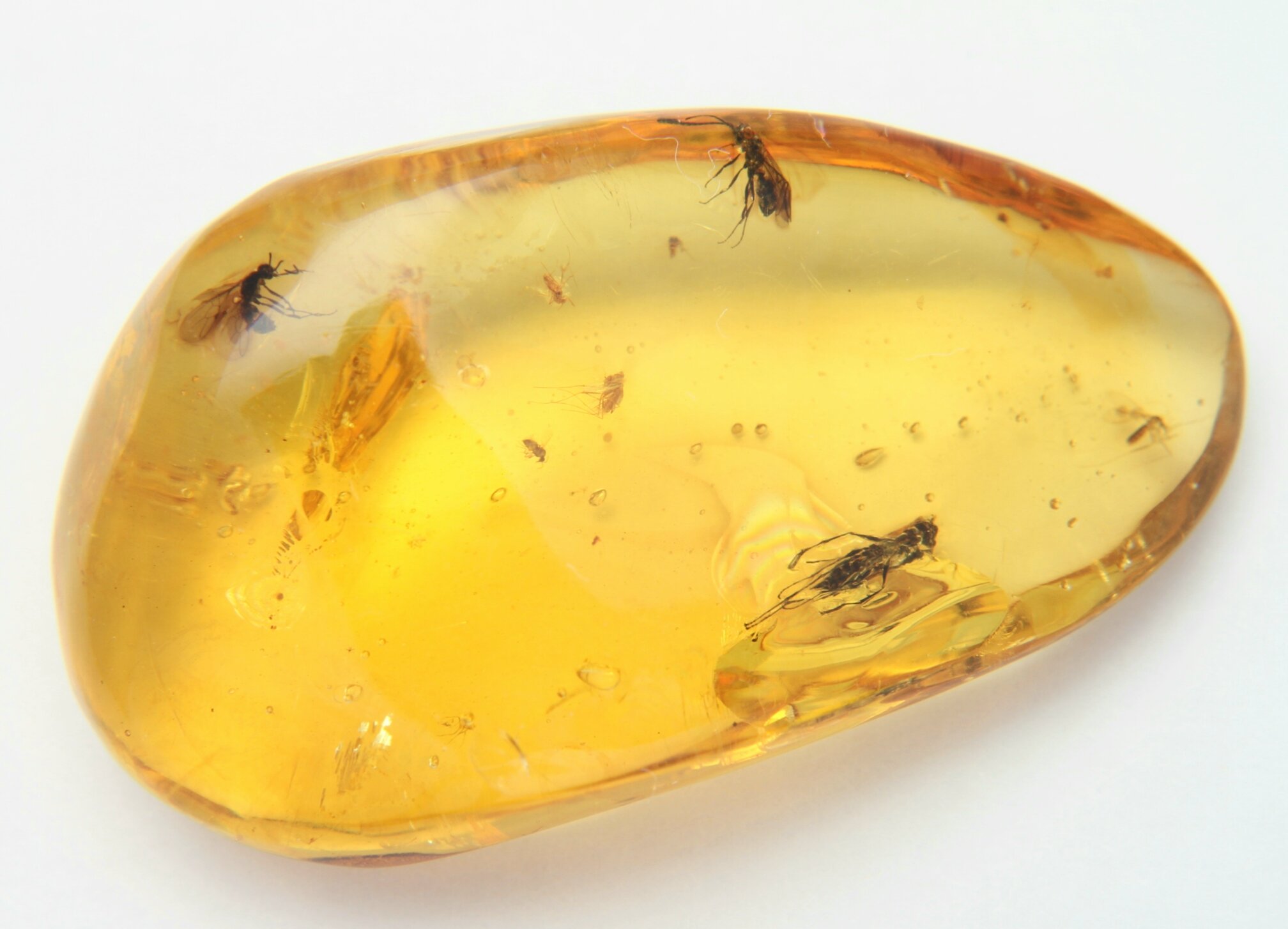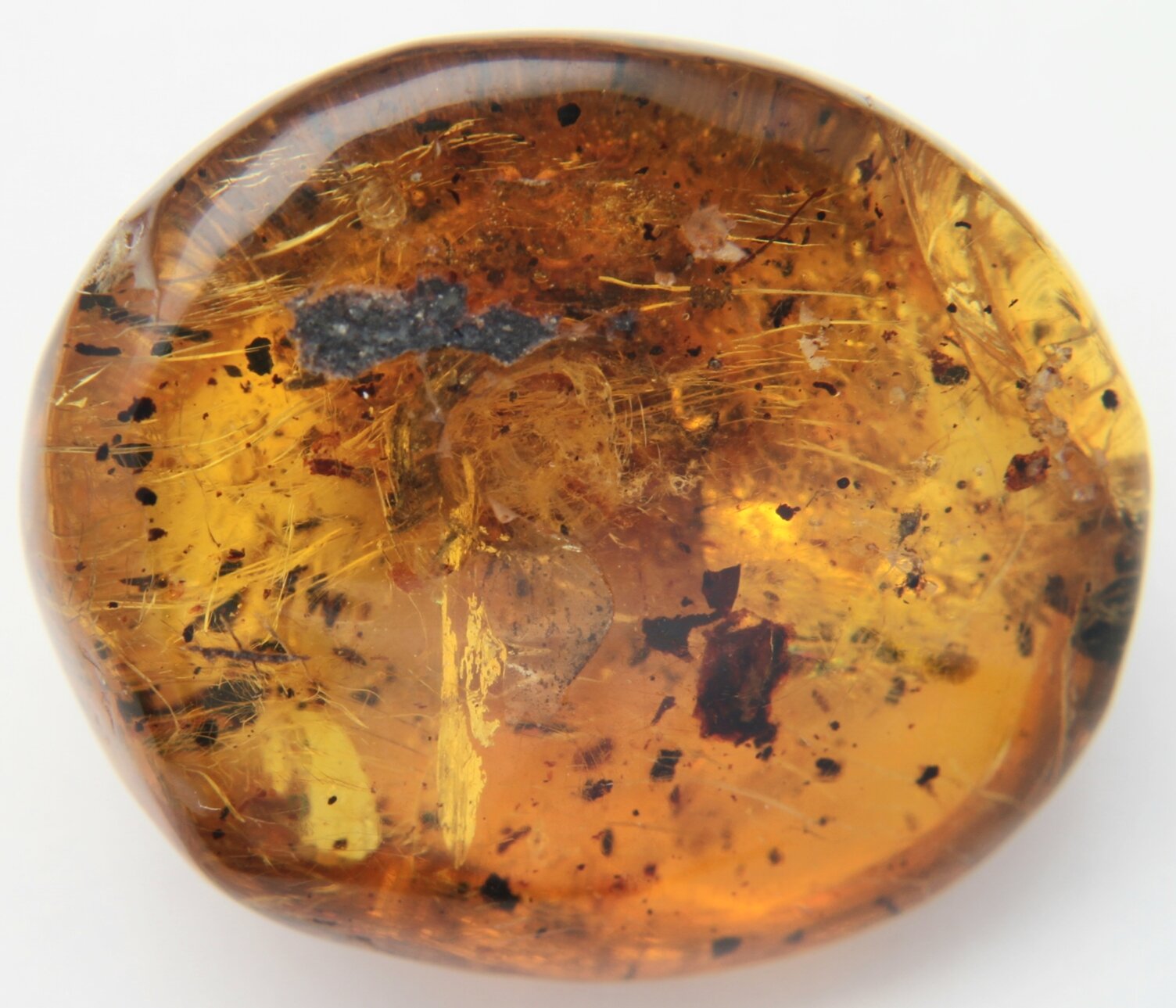Amber with inclusions
When plant or animal organisms are enclosed in amber, they are called inclusions. In Baltic amber animal and/or vegetable inclusions occur in about 5 - 20% of all finds. Vegetable inclusions are very rare apart from tiny oak blossom hairs, pollen or spores. Insects are among the most common animal inclusions with 65 - 80 %. Two-winged insects account for 50-60 %, followed by springtails, mites and beak notches. Larger animals are rarer, as they were more able to free themselves from thin and sticky resin. Amber with inclusions open a window into the past for researchers. From the inclusions they extract information about the life millions of years ago (see photos).
Since larger animal inclusions are rare and valuable, fakes are often offered. We bought the following amber object "Scorpion" in the Dominican Republic and it is most likely a fake (see photo).
Since larger animal inclusions are rare and valuable, fakes are often offered. We bought the following amber object "Scorpion" in the Dominican Republic and it is most likely a fake (see photo).
“Skorpion”
Fake?
Literature:
Michael Ganzelewski / Rainer Slotta, Bernstein - Tränen der Götter. 1997, Verlag Glückauf, Essen
Carsten Gröhn / Max J. Kobbert, Pflanzen seit der Saurierzeit eingeschossen in Bernstein, 2017 Wachholtz Verlag - Murmann Publishers, Kiel/Hamburg
Günter Krumbiegel / Brigitte Krumbiegel, Faszination Bernstein, 2001 Goldschneck-Verlag, Korb



